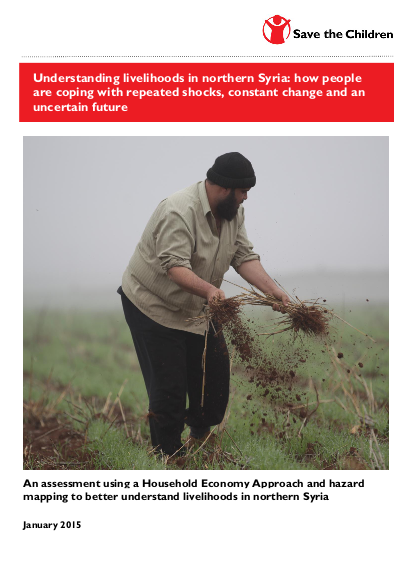An assessment using a Household Economy Approach and hazard mapping to better understand livelihoods in northern Syria

To date the impact of humanitarian assistance provided in Syria has been compromised by limited information and analysis of the context in which families are living and their ability to cope with the changing situation. As a result the scope of interventions to support families’ livelihoods has been limited and the majority of focus has been on providing immediate assistance with little emphasis on bolstering coping mechanisms to help communities adapt to future shocks. In order to develop a more comprehensive and strategic response to support communities, Save the Children carried out a livelihoods analysis in northern Syria in November 2014 in order to review the appropriate options for immediate and medium-term livelihoods interventions as well as making needs-based recommendations for food assistance moving forward.
The assessment used the core principles of the household economy approach (HEA) adapting it to enable easier usage through remote technical support and covered two distinct groups, IDPs and host communities.
